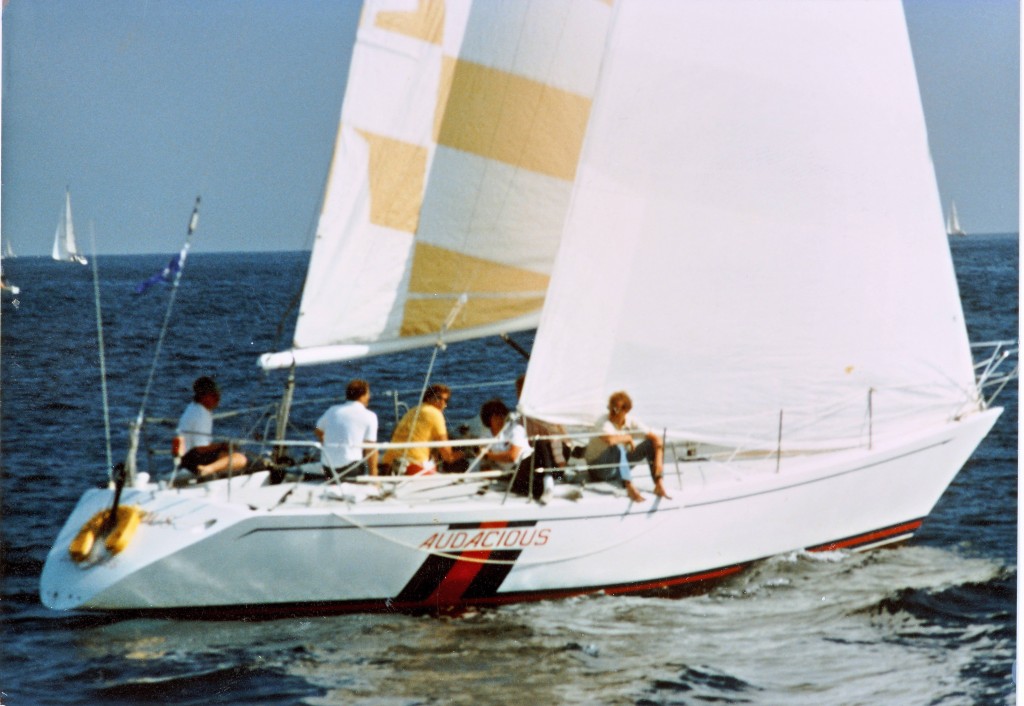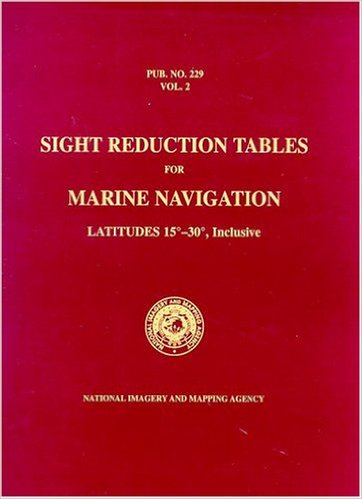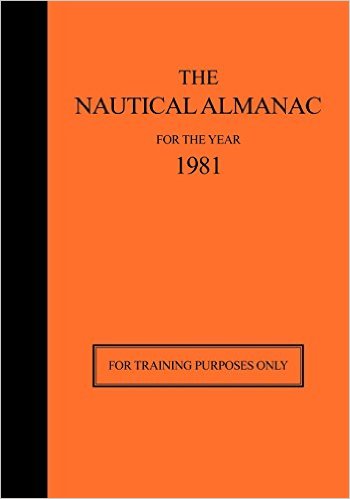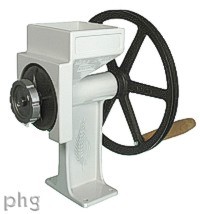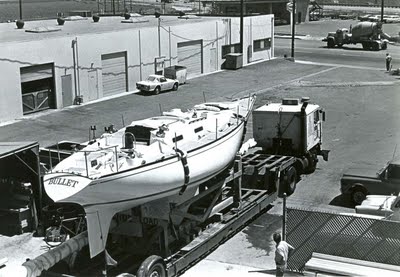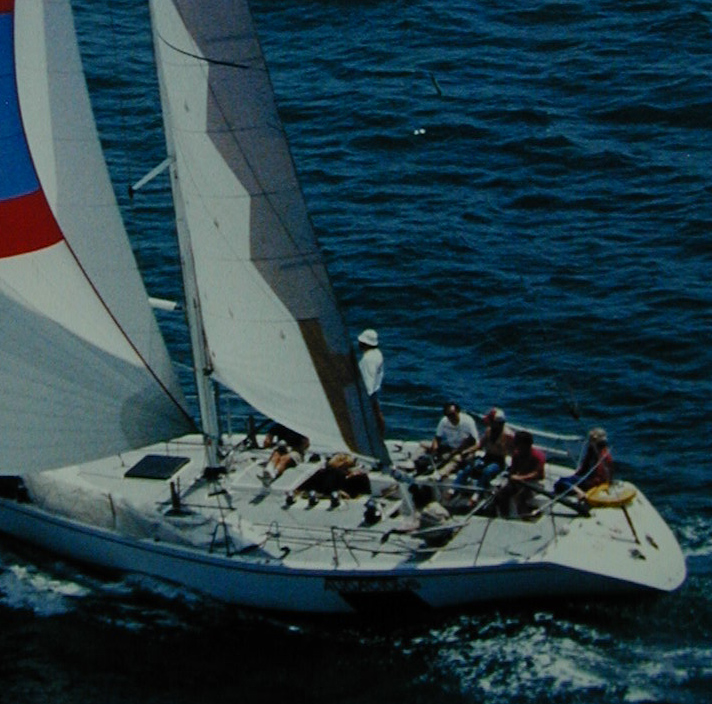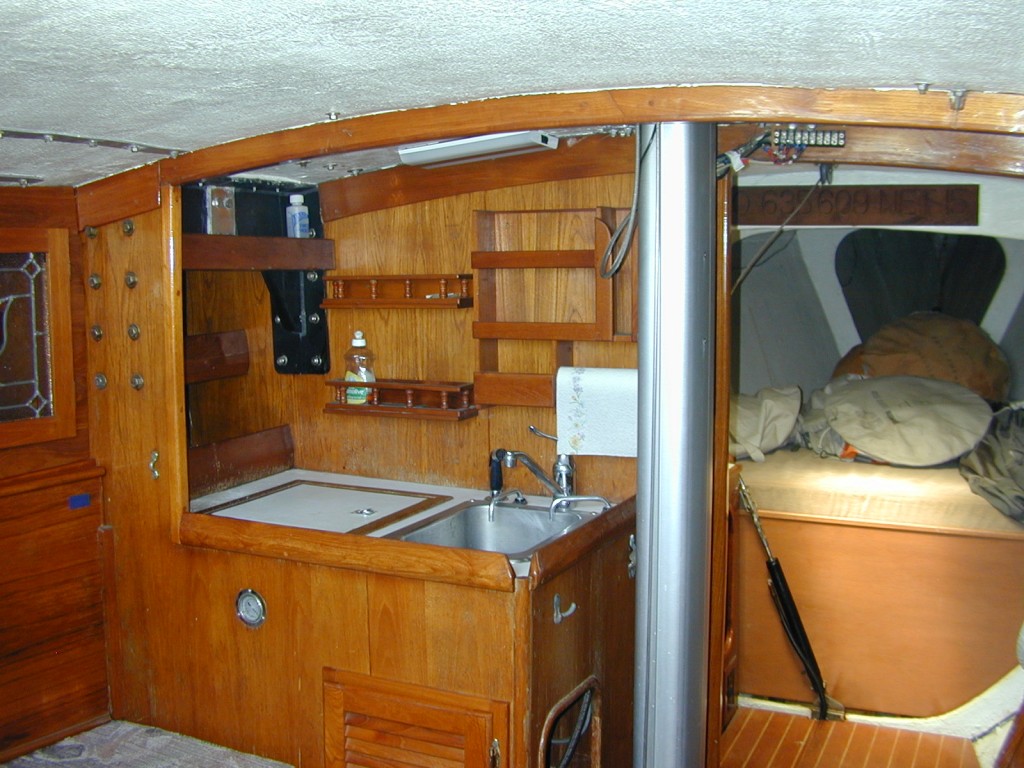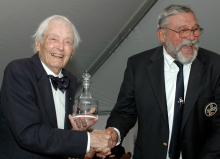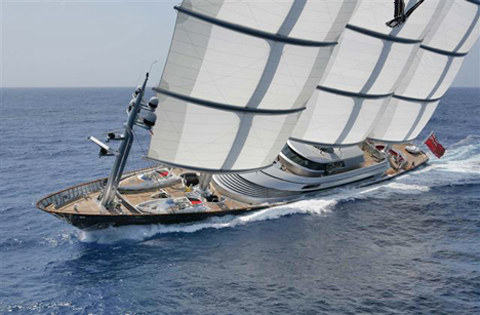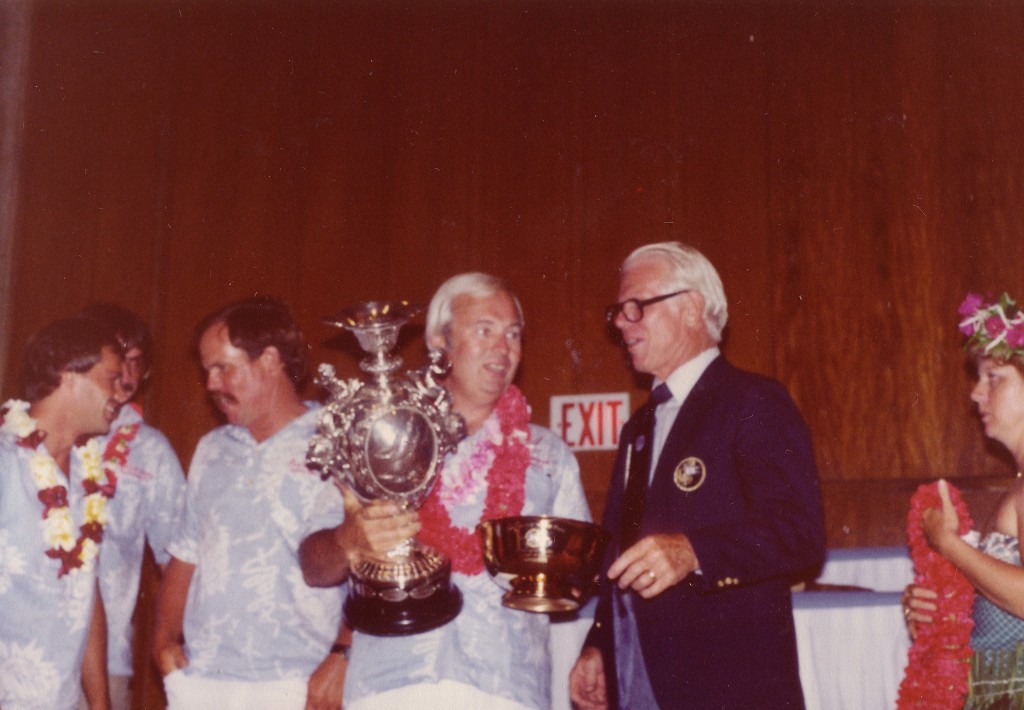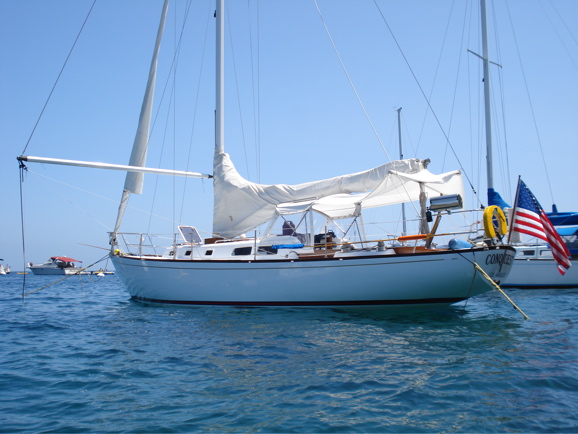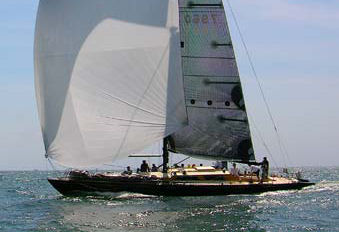
UPDATE #3- Ragtime has won her class in the Sydney-Hobart Race. She was given almost 2 hours credit for going to the aid of a 53 foot boat that had lost its rudder and was taking on water.
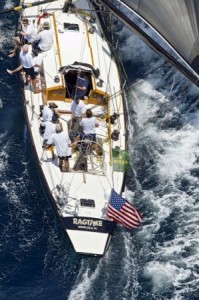
She was the 18th boat to finish and also the first non-Australian and the first wooden finisher. She just keeps winning.
UPDATE #2- Ragtime has won the Tahiti Race overall on corrected time. The story is here. Ragtime won the first-to-finish trophy for this race in 1973.
UPDATE: Ragtime still leads the Tahiti Race and the report on 7/5/08 is: “Ragtime: wet and fast all night long.” Finish time estimated on 7/7 at noon.
In 1971, when I was sailing my Cal 25 one day off Marina Del Rey, I saw a low and sleek black yacht come out of the harbor and sail past us. It’s name was Ragtime. I later learned that it had been brought to California by John Hall, a yacht broker and owner of a Columbia 50. I then found that it was for sale for $19,000 ! Even then, that was a small price. I talked to my next-door neighbor, with whom I had done some sailing on his family boat. We decided that a 62-foot boat was more than we could handle and it probably needed a lot of work. We were correct on both counts.
A year later, my wife and I were at anchor at Catalina Island, at the Isthmus, when we saw the boat again. It had been purchased by a syndicate of owners from Long Beach Yacht Club. Most of them were aboard that day and we went over in our dinghy to compliment them and get a closer look. That was 35 years ago.
Ragtime began in 1964 as a yacht named Infidel and eventually made her way to California after being excluded from races in New Zealand because of her light construction. She is built of plywood and has hard chines as a consequence. The Long Beach Syndicate made history as Ragtime was first to finish in the 1973 Transpac. The favorite that year was Windward Passage, the great racing yacht that is still a legend. Ragtime appeared behind ‘Passage a day or so before the finish and she is so low that she looks like a submarine. The next day, she had passed them and the finish was exciting as they both had trouble finding the line and sailed though a fleet of spectator boats at midnight doing 17 knots. Ragtime won first to finish by less than 5 minutes.
The syndicate sold Ragtime to Bill White, a doctor from Sierra Madre (near Pasadena) and Bill Pasquini, both Long Beach YC members, and in 1975 everyone wondered if the new owners could make her go as fast. Once again she was first to finish. Since that time, she has sailed a total of 14 Transpacs and many Mexican races when they were run back in the 70s. She was so fast, and so wet, that they would seal up the foredeck hatch for the duration of the race. Her bow was often under water when she was going fast; and that was much of the time.
Eventually, she fell upon hard times. Few race boats inspire affection after they stop winning races. She even ended up being auctioned off by the sheriff, like some old car. Fortunately, she fell into good hands and was resurrected.
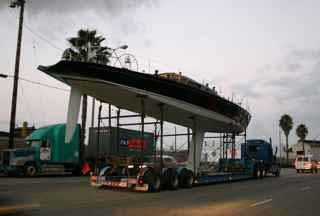
Here she is on her way to the shipyard after the auction. By 2007, with a new high tech keel, she was racing again.
Last month, she was one of four boats to begin the race to Tahiti, the first since the race was last run in 1994. It is a far greater challenge than the Hawaii Race since the course crosses the equator and the boats must pass through the Doldrums. Trade winds on the other side blow in the opposite direction. In the north Pacific, the Trades blow from the northeast, driven by the summer north Pacific High, which rotates clockwise sending strong breezes from east to west. In the south Pacific, high pressure rotates counterclockwise, just as the coriolis effect dictates how water rotates as it goes down the drain. We were at Catalina that weekend and Sunday, the 22nd, we sailed back to Los Angeles keeping an eye out for the race boats. We saw them about half way across, close hauled but with a good breeze and able to lay the West End without tacking. Now they are 11 days into the race.
If you play around with this tracking site, and enter Ragtime as boat name, you can follow the track and see how the course differs from the Hawaii Race.
Magnitude 80, a modern ultralight maxi boat 80 feet long, has finished, breaking the old record by three days but Ragtime still leads on handicap time and could win one more race.
LOS ANGELES TAHITI 2008
DAILY STANDINGS
07/04/08
(0600 PDT)
==============================================
DST CORR STDGS
ID YACHT LAT LON 2GO CL FL Finish/ ETA
================================================
DIVISION 1:
————————————————————–
156 MAGNITUDE 80 FINISHED 0 1 2 03/23:13:18
93 MEDICINE MAN 09-55- 146-42 483 2 4 06/02:08
————————————————————–
DIVISION 2:
—————————————————————
90 FORTALEZA 01-09- 140-05 1127 2 3 09/16:13
152 RAGTIME 05-25- 143-24 809 1 1 07/16:34
—————————————————————
Yachts listed: 4 07/04/2008 11:05:48
Note that the latitude is zero at the equator and Tahiti is 17° 52 minutes south and 149° 56 west. Hawaii is 20 degrees north. Ragtime still has 12 degrees, 27 minutes south and 6 minutes, 32 degrees west to go. In the southern hemisphere, the trade winds generally blow from west and south to north and east so the boats are beating and close reaching into the wind, very different conditions from the Transpac race to Hawaii, which is mostly a broad reach after the first few days. These are not her best conditions but she is still 1 and 1, so far. Not bad for an old lady.
